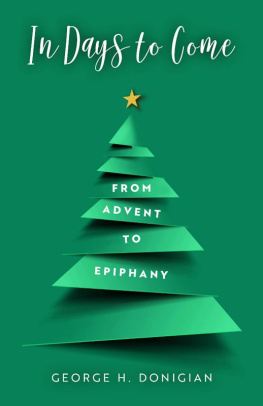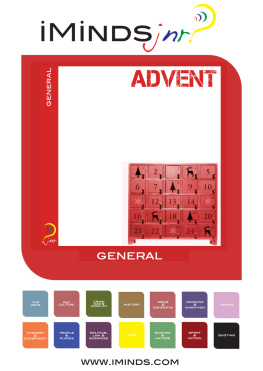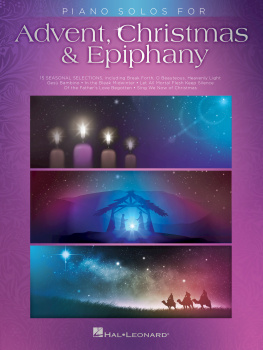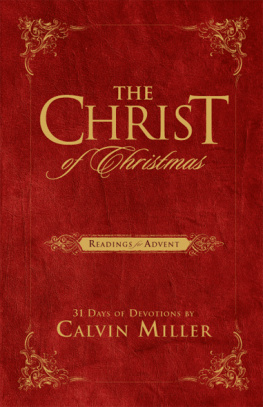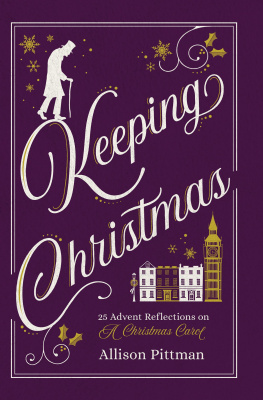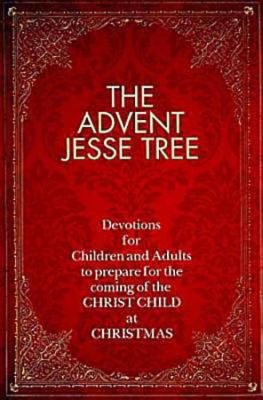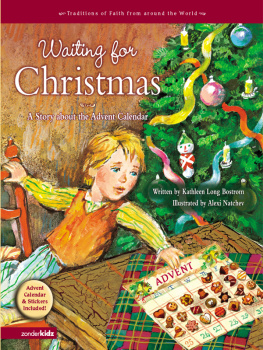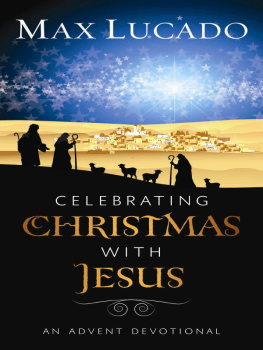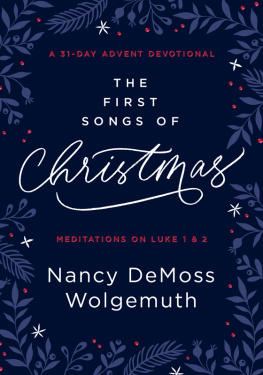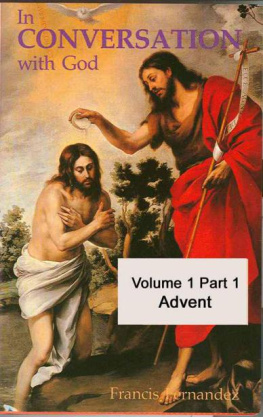A dvent calendars help us mark time as we move toward Christmas. Advent calendars may be simple or ornate. Usually made from heavy paper, flaps open to reveal an image for the day. More ornate Advent calendars are wooden with cubicles for users to open and mark the days. The first Advent calendars highlighted religious symbols and traditions that pointed toward Christmas. Today Advent calendars may show cartoon characters or cars, photos of nature or technological devices, in addition to religious symbols. Most of the commercially prepared calendars begin on December 1, though beginning on the first Sunday of Advent seems more appropriate.
As a child myself and then years later with my own children, I enjoyed opening the windows of the Advent calendar to see the symbol or reminder of faith. Sometimes the representations fostered meaningful conversations with my mother about Christian discipleship. Sometimes we unpacked the symbolism, for example, when one calendar showed a boat. I learned then that a ship represented the church.
Advent calendars do more than mark the passage of time; they allow symbols and signs of Gods love and Gods differing gifts to surprise us as we move toward Christmas. As you read this book, you will see that I have numbered the meditations in a reverse numerical order. I think of these meditations as an Advent calendar. The first meditation is number 24; the meditations count down from that first meditation of Advent to the last meditation. As you read them, you will also see that, unlike most Advent calendars, the meditations continue through the season of Christmas and end with Epiphany. Each week includes an introduction and four meditations. You may choose to read the introduction on a Sunday and then read the meditations on a Monday-Tuesday, Thursday-Friday plan or as they fit your schedule during this busy season. An optional approach would be to read the opening antiphon of each week on day 1 and spend some time pondering its words. On day 2 a reader would read the introduction, then on days 36, the four meditations would follow. Finally, on day 7, the questions for the week would allow you to reflect on your reading, prepare for a group discussion if you are involved in such, and simply rest and reflect. I hope that each portionantiphon, week introduction, meditations, and reflection questions will help you grow as a follower of Christ and to practice the disciplines of the spiritual journey.
Each year of my childhood, my family celebrated Christmas on December 25 and January 6. We called December 25 American Christmas. We would attend a Christmas Eve service at a local church. On December 25 we opened Christmas gifts from Santa Claus and one another. Christmas carols and songs played in the background throughout the day. My family also held an open house on Christmas afternoons, and the hours for those gatherings expanded. Friends began arriving for our familys last Christmas open house around noon, and the last of the visitors left at midnight.
On January 6 my family celebrated Armenian Christmas, known also in the Armenian tradition as Theophany. The Christmas traditions of the Armenian Apostolic Orthodox Church differ from our American celebration in that Armenians celebrate the nativity and the baptism of Christ at the same time. By January 1, my non-Armenian friends were commenting and asking when my family would remove its Christmas decorations. I learned that many of them took down their decorations on Christmas Day or on December 26. How odd that seemed to me, and how odd our notions seemed to them!
Armenian Christmas traditions center around church and family time. The church recommends fasting for the week prior to January 6. According to one Armenian tradition, the Virgin Mary went into labor after eating spinach. Armenian observance thus includes a spinach dish on Christmas Eve, a tradition my family observed on an irregular basis.
I still like to connect the two Christmas traditions. Celebrating the two Christmases changes my sense of time. I do not have to stop listening to Christmas music on December 24 simply because commercial interests want us to prepare for Valentines Day. I can continue to enjoy the music and the decorations of Christmas and reflect on the journey of the magi, as well as the escape of the Holy Family to Egypt. After this event comes a gradual movement into the calendars flow of Ordinary Time and then Ash Wednesday.
Lingering in the longer season of Christmas gives a deeper sense of wonder and awe concerning the Incarnationthe basic task of the church calendar. We begin the Christian year in Advent with a sense of expectation and hope. We prepare to celebrate Gods gift in Jesus Christ. We come to a sense of fulfillment at Christmas and discover a renewed sense of awe and praise at the news of Jesus birth. We continue to reflect with a sense of wonder as the church year moves to Epiphany and the remembrance of the magis visit.
In Days to Come offers devotional meditations that carry us from Advent to Epiphany, from the season of expectation to the season of fulfillment and mission. As you read and reflect on the writings, I hope you will experience a slowing down and an expansion of the seasonal rhythm.
Within strong liturgical traditions, people sing or chant antiphons in response to a psalm. An antiphon is a verse or a series of verses sung as a prelude or conclusion to some part of the service. Each weeks meditations grow from the O Antiphons. The title of each one begins with the vocative O . Each antiphon is a name of Christ, one of his characteristics mentioned in scripture. They are as follows:
O Sapientia (O Wisdom)
O Adonai (O Lord)
O Radix Jesse (O Root of Jesse)
O Clavis David (O Key of David)
O Oriens (O Dayspring)
O Rex Gentium (O King of the nations)
O Emmanuel (O With Us Is God)
The O Antiphons are sung or recited at the vesper services from December 1723, the last week of Advent in the liturgy of the Roman Catholic and Anglican traditions, originating in the fifth century in the Latin language of the church. Their focusing designations come from the prophet Isaiah and grow from attributes of the promised Messiah. In this book the titles will help us pause and see Advent-Christmas-Epiphany with deeper eyes of faith. ( The United Methodist Hymnal includes all the O Antiphons after the hymn O Come, O Come, Emmanuel.)
The meditations will reflect on Bible passages that anticipate the coming Messiah. Isaiah and Micah describe mission and ministry. From the Gospel of Luke we hear the songs of Elizabeth and Mary. As we move through Christmas, we also hear Zechariahs prophecy. Reflection will also take us into consideration of lightthe first part of Creation.
I did not limit the meditations to reflection on Bible passages. You will read about seasonal music and art and about writers or composers. I believe that all our creativity can point to a greater awareness of God at work in the world. Our lives in the present build upon the lives of our ancestorsall the sisters and brothers in Christ. W. Paul Jones, in the introduction to his book An Eclectic Almanac for the Faithful, describes our need to learn from a greater history: What we encounter is the creativity and compassion of a God who specializes in making us instruments of the divine vision in spite of ourselves (page 7). As we intentionally slow down the pace of time from Advent to Epiphany, we will begin to see how God partners with us in the divine vision of love eternal.
As a reader, you know your history and how you came to faith, your participation in church life, and how you practice spiritual disciplines. I have diverse interests. You may learn a smattering about Armenia, jazz, John Wesley, baseball, spiritual practices, and poetry along with reflections on Bible passages and this time of year. My journey of faith has been a winding one that began with my baptism at Saint Gregory the Illuminator Armenian Apostolic Orthodox Church in Philadelphia, Pennsylvania. I eventually moved to confirmation in the Lutheran Church-Missouri Synod before I became part of The United Methodist Church. I have worked as a pastor and a book editor. I also worked on a garbage truck and in a sandpaper factory. (Both of those jobs had their gritty facets.) And in these latter days, I have served as pastor and author. I am the author of several books, including A World Worth Saving and Three Prayers Youll Want to Pray . A World Worth Saving offers guidance for the season of Lent and also includes stories of heritage, tradition, and transformation. The same description seems appropriate for Three Prayers , a book that invites readers to a disciplined practice of praying prayers from Dag Hammarskjld, Reinhold Niebuhr, and Jesus of Nazareth. Thank you for reading this book and for being part of the community of faith as we move forward in these days of hope.
Next page
